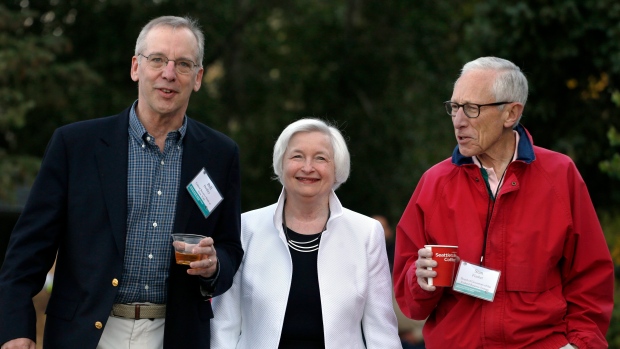Aug 26, 2016
U.S. Fed's Yellen says case for interest rate hike has strengthened
, Reuters

JACKSON HOLE, WYO. - The case for a U.S. interest rate hike has strengthened in recent months, Federal Reserve Chair Janet Yellen said on Friday in a speech that left the door open for such a move as early as next month.
Yellen, speaking at an international gathering of central bankers and academics in Jackson Hole, Wyoming, did not say when the U.S. central bank would raise borrowing costs, and investors remained skeptical that such a move was imminent.
But the Fed chief said the U.S. economy was creating a lot of new jobs and would likely keep growing moderately, despite data earlier in the day showing only sluggish growth in the second quarter.
"In light of the continued solid performance of the labor market and our outlook for economic activity and inflation, I believe the case for an increase in the federal funds rate has strengthened in recent months," Yellen said, adding that the Fed still thinks future rate increases should be "gradual."
Yellen did not give guidance on what the central bank needs to see before raising rates. Following her remarks, investors continued to bet there were roughly even odds of an increase at the Fed's December policy meeting.
"She's just kept the door open for a hike sooner rather than later," said Subadra Rajappa, an interest rate strategist at Societe Generale in Washington.
The Fed also has policy meetings scheduled in September and November, with prices for fed funds futures implying investors see much lower chances of a rate increase at either of those meetings.
Fed Vice Chair Stanley Fischer, however, told CNBC on Friday that a rate hike in September and more than one hike before the end of the year were possible, though he added that it would depend on future economic data.
In her speech, Yellen said the U.S. central bank already thinks the economy is close to meeting its goals of maximum employment and stable prices. She also described consumer spending as "solid," but noted that business investment was weak and exports were taking a hit from a strong U.S. dollar.
The Fed raised rates in December, its first hike in nearly a decade, but it has held off further increases so far this year due to a global growth slowdown, financial market volatility and an inflation rate persistently below its 2 per cent target.
The dollar jumped after Yellen's remarks and was about 0.50 per cent higher against a basket of currencies .DXY in early afternoon trading. U.S. stock prices fell in choppy trading, while prices of U.S. Treasuries were mostly weaker.
OTHER OPTIONS
The Fed signaled in June that it still expected to raise rates twice this year, but investors have been doubtful in part because policymakers appear sharply divided over whether to hike rates soon or take a more cautious approach.
Yellen noted that Fed officials have a wide range of views on where rates will likely be in the coming years. She said current forecasts imply a 70 per cent probability they will be between 0 per cent and 3.75 per cent at the end of 2017, and a 70 per cent probability they will be between 0 per cent and 4.5 per cent at the end of 2018.
Yellen was speaking at a Fed conference where central bankers gathered to hear new ideas on how to stimulate economies even after officials have cut rates to near zero and flooded banks with money.
She devoted much of her speech to outlining how the Fed may deal with recessions now that an aging population, weak investment and other dynamics appear to be slowing economic growth and keeping interest rates lower.
Some analysts have suggested the Fed will have less flexibility to fight future recessions because there will be less room to cut rates.
Such a view is "exaggerated," Yellen said, because the Fed will be able to buy bonds and make pledges about future policy to lower interest rates. She said the Fed still planned to wind down its massive balance sheet, but that such an effort would take time. Yellen added that the balance sheet was likely to be useful for policy for some time.
The Fed may also want to explore other options, including broadening the range of assets it can purchase, raising the inflation target, or targeting nominal GDP, she said.
